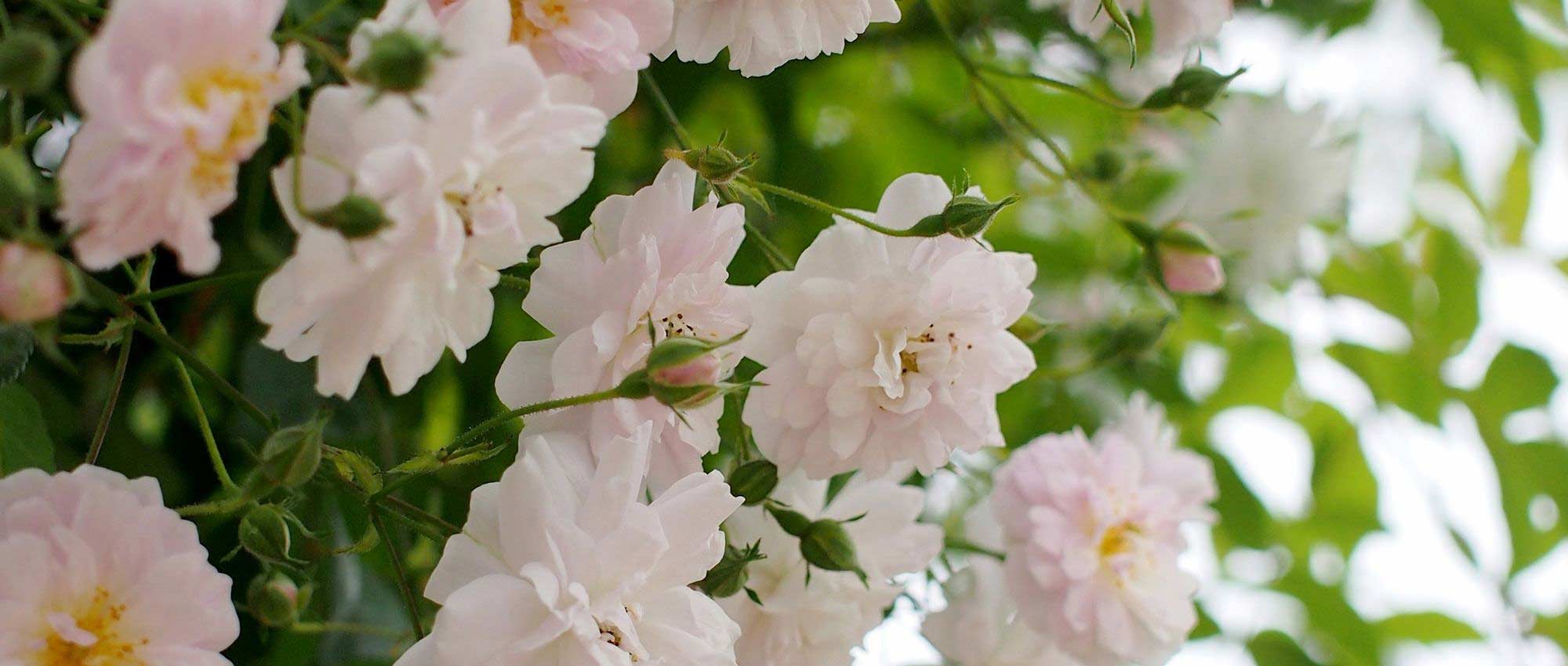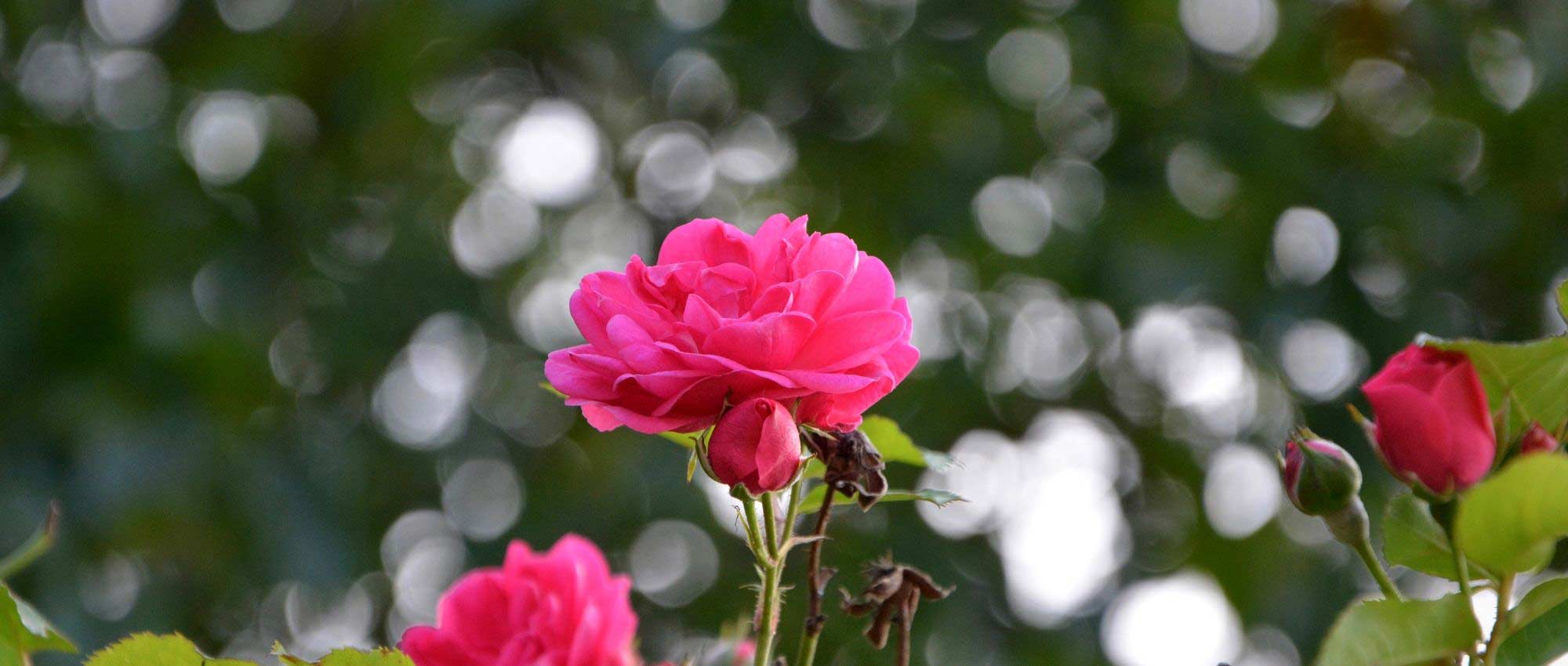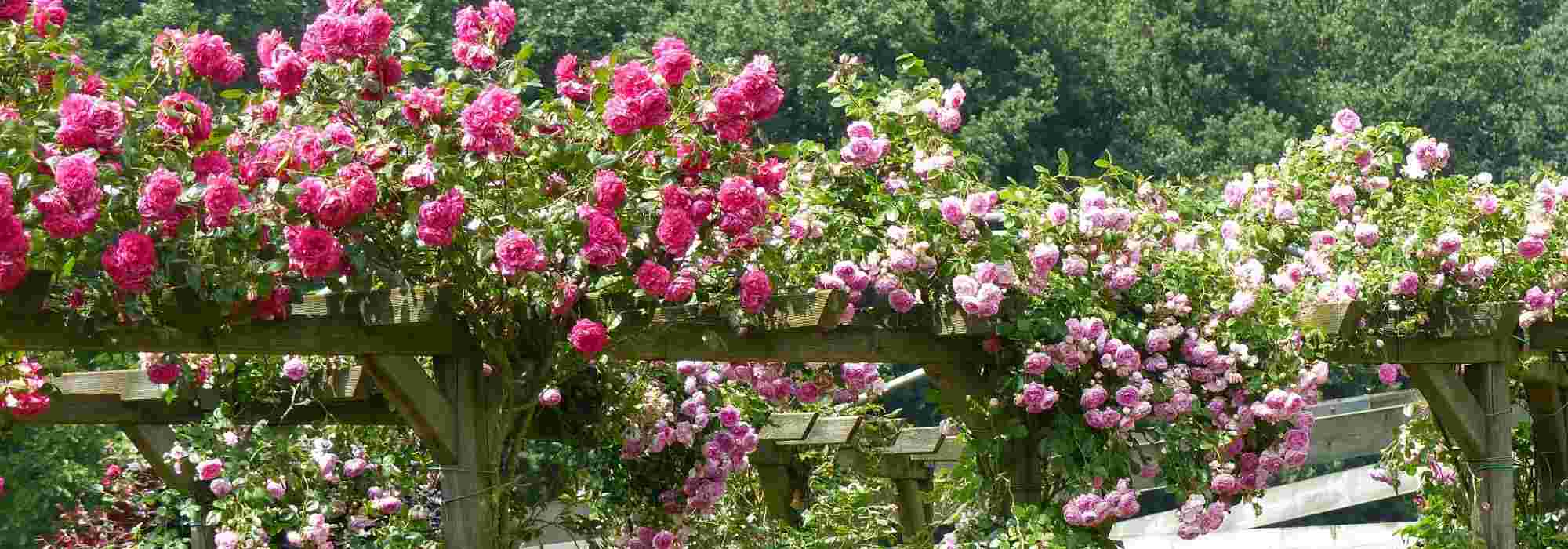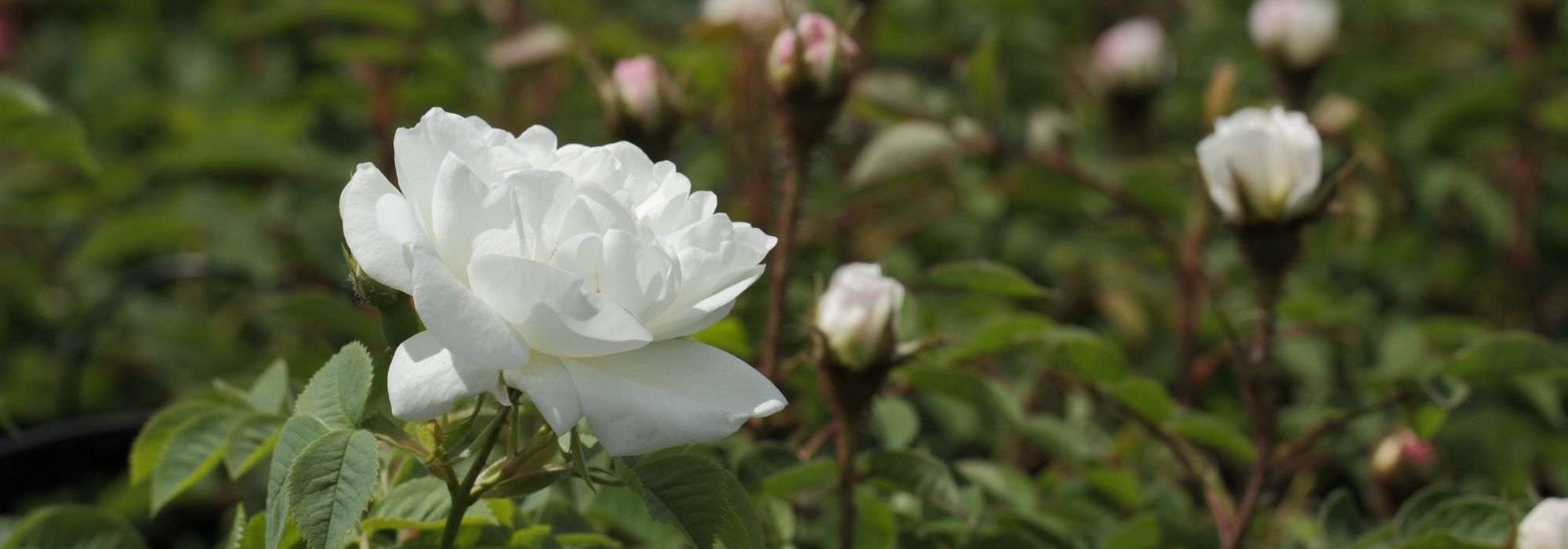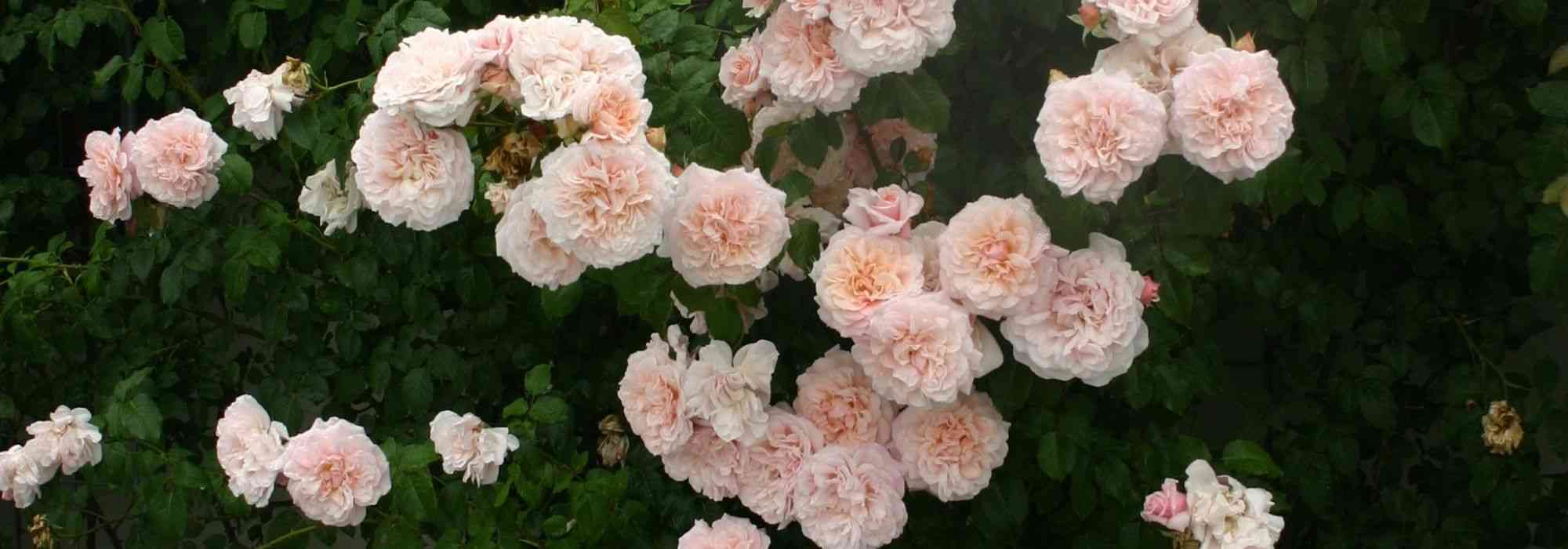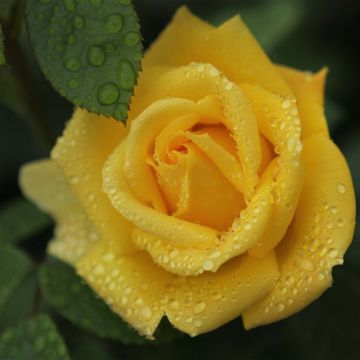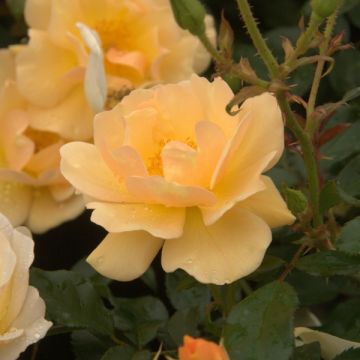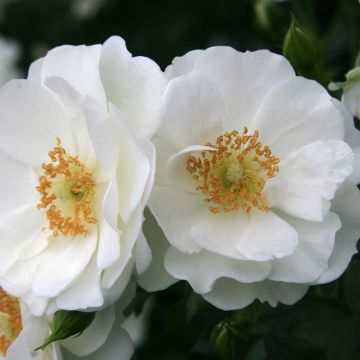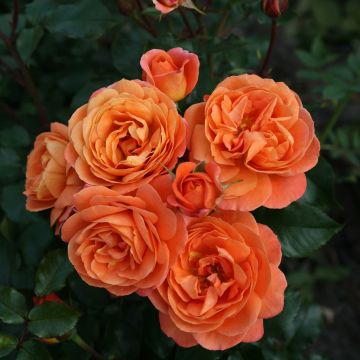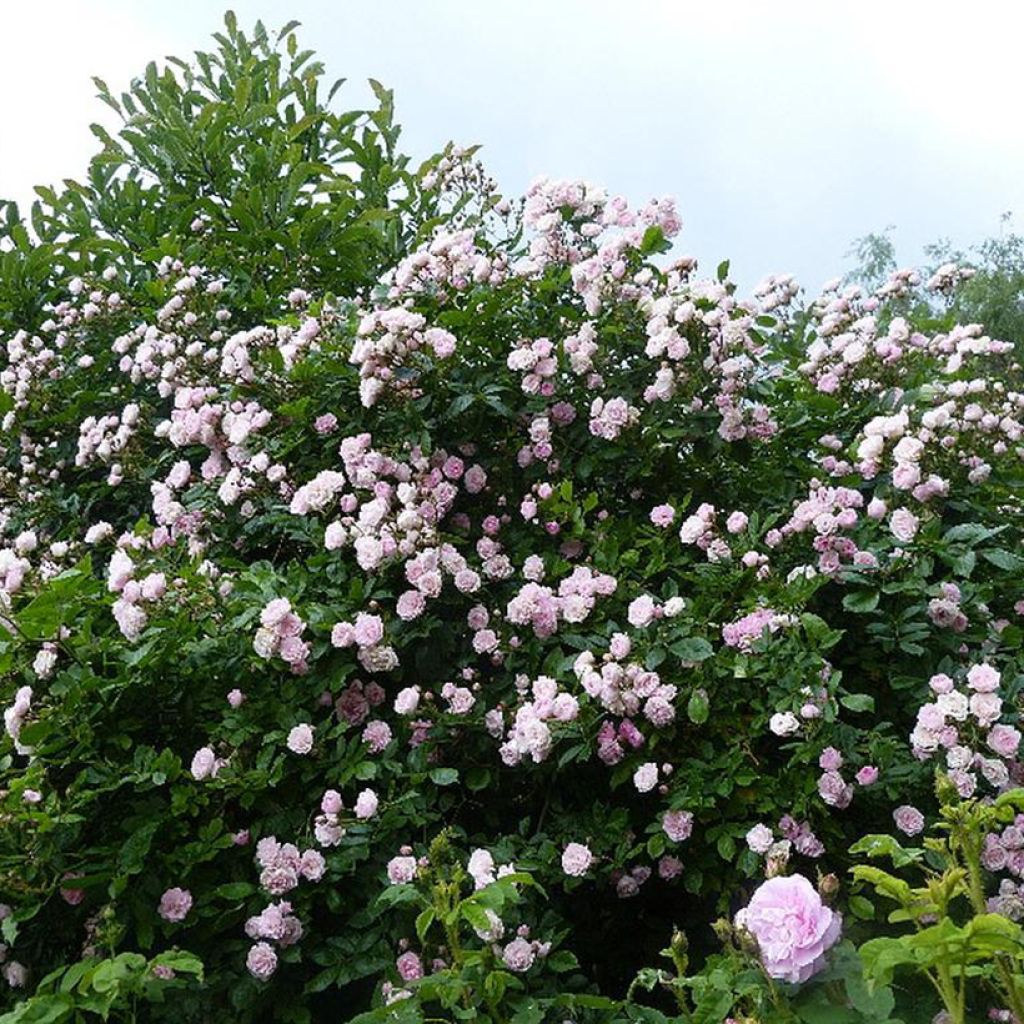

Rosier grimpant Frau Eva Schubert
Rosa Frau Eva Schubert - Climbing Rose
Rosa multiflora x moschata Frau Eva Schubert
Special offer!
Receive a €20 voucher for any order over €90 (excluding delivery costs, credit notes, and plastic-free options)!
1- Add your favorite plants to your cart.
2- Once you have reached €90, confirm your order (you can even choose the delivery date!).
3- As soon as your order is shipped, you will receive an email containing your voucher code, valid for 3 months (90 days).
Your voucher is unique and can only be used once, for any order with a minimum value of €20, excluding delivery costs.
Can be combined with other current offers, non-divisible and non-refundable.
Home or relay delivery (depending on size and destination)
Schedule delivery date,
and select date in basket
We guarantee the quality of our plants for a full growing cycle, and will replace at our expense any plant that fails to recover under normal climatic and planting conditions.
Description
The 'Frau Eva Schubert' Rose is a superb hybrid of Rosa multiflora and R. moschata created by Tepelmann in 1937. With a flexible habit, this vigorous climbing rose has a very recurrent flowering and offers sublime bouquets of small double flowers ranging from pink to white, slightly fragrant. They bloom on particularly abundant, light green and healthy foliage. This charming climbing rose is easy to grow in many regions. Its graceful habit invites you to train it loosely to let it cascade as it pleases. It is also stunning in a large shrub bed or a flowering hedge.
When left to grow without constraints, the 'Frau Eva Schubert' Rose has a generous and bushy habit, reaching an average height and spread of 1.60 m (5ft) in all directions. Its arching habit allows it to be pruned and trained on a support such as an arch, an obelisk, a wire fence, or a wall covered with a large trellis. In this case, it will climb up to 3 m (10ft) in height and even up to 4 m (13ft). The flexible stems of this climbing rose are not very thorny, and the plant does not become bare at the base. They bear abundant, deciduous foliage composed of light green leaflets. Its flowering is particularly abundant in June and in September-October. Grouped in large panicles, the buds display a soft pink colour. They open into double flowers, 4-5 cm (2in) wide, in an old-fashioned style. Their fragrance is light. The disease resistance of this rose is excellent under good growing conditions, as well as its ability to withstand strong frosts, around -20°C (-4°F).
Despite being 90 years old, the 'Frau Eva Schubert' Rose has not lost any of its charm, and it fully deserves to be planted in the garden of rose enthusiasts. Hardy and vigorous, it adapts to all soils that are not too dry and to all climates, allowing it to be planted in any garden. It will integrate perfectly into a landscape hedge, enhancing the foliage of dogwoods and viburnums. Due to its very natural habit, it can be trained as a large shrub and combined with all kinds of summer-flowering shrubs or decorative foliage plants. Large-flowered clematis (Lucky Charm, Sucess Bleu de Loire, Star of India) complement its small pompom-shaped clusters well.
If you have enough space, English, Old, or Shrub Roses are stunning when planted in groups of three. They will grow together to form one opulent bush that will flower even more generously.
Rosa Frau Eva Schubert - Climbing Rose in pictures
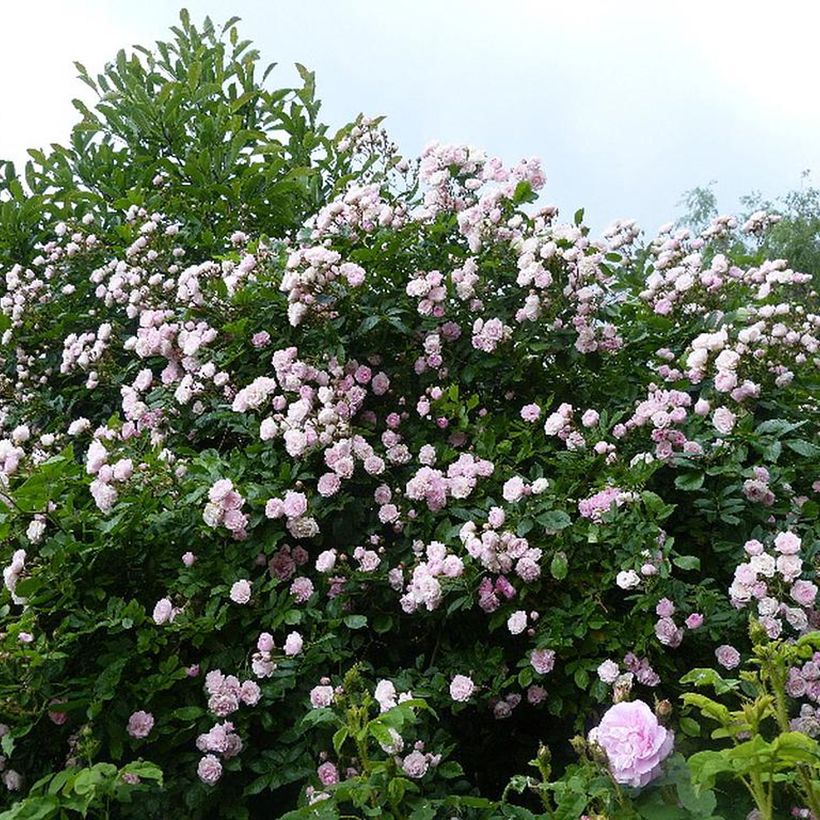

Plant habit
Flowering
Foliage
Botanical data
Rosa
multiflora x moschata
Frau Eva Schubert
Rosaceae
Cultivar or hybrid
Planting and care
Plant your 'Frau Eva Schubert' rose bush in a sunny or semi-shaded location to protect its flowers from the strong midday sun rays that can fade them. Roses are adaptable, but they don't like an excess of limestone. They will thrive in any garden if the soil is well-worked and rich. This rose bush is naturally disease-resistant and won't need special treatment if the growing conditions are satisfactory. However, humid climates may require a preventive treatment in spring with sulfur, which is effective against fungal diseases.
To plant your rose bush, break up the soil well and add an amendment, such as blood, fish and bone, to the bottom of the planting hole. Water generously after planting to remove any air pockets. Water regularly for a few weeks to help root development. Since it is a perpetual flowering rose, it needs regular deadheading to promote the growth of new flower buds without exhausting the bush.
Rejuvenate your rose bush by removing the oldest stems near the base, then balance the bush by pruning short and long branches. Remove dead wood and lightly aerate the centre of the rose bush. Choose an outward-facing bud for pruning and make a slanted cut just above it. Train your rose bushes as they grow to ensure they cover your support.
Roses may develop unsightly spots at the end of summer, but this is a natural occurrence and doesn't harm the rose's growth.
Planting period
Intended location
Care
Planting & care advice
This item has not been reviewed yet - be the first to leave a review about it.
Similar products
Haven't found what you were looking for?
Hardiness is the lowest winter temperature a plant can endure without suffering serious damage or even dying. However, hardiness is affected by location (a sheltered area, such as a patio), protection (winter cover) and soil type (hardiness is improved by well-drained soil).

Photo Sharing Terms & Conditions
In order to encourage gardeners to interact and share their experiences, Promesse de fleurs offers various media enabling content to be uploaded onto its Site - in particular via the ‘Photo sharing’ module.
The User agrees to refrain from:
- Posting any content that is illegal, prejudicial, insulting, racist, inciteful to hatred, revisionist, contrary to public decency, that infringes on privacy or on the privacy rights of third parties, in particular the publicity rights of persons and goods, intellectual property rights, or the right to privacy.
- Submitting content on behalf of a third party;
- Impersonate the identity of a third party and/or publish any personal information about a third party;
In general, the User undertakes to refrain from any unethical behaviour.
All Content (in particular text, comments, files, images, photos, videos, creative works, etc.), which may be subject to property or intellectual property rights, image or other private rights, shall remain the property of the User, subject to the limited rights granted by the terms of the licence granted by Promesse de fleurs as stated below. Users are at liberty to publish or not to publish such Content on the Site, notably via the ‘Photo Sharing’ facility, and accept that this Content shall be made public and freely accessible, notably on the Internet.
Users further acknowledge, undertake to have ,and guarantee that they hold all necessary rights and permissions to publish such material on the Site, in particular with regard to the legislation in force pertaining to any privacy, property, intellectual property, image, or contractual rights, or rights of any other nature. By publishing such Content on the Site, Users acknowledge accepting full liability as publishers of the Content within the meaning of the law, and grant Promesse de fleurs, free of charge, an inclusive, worldwide licence for the said Content for the entire duration of its publication, including all reproduction, representation, up/downloading, displaying, performing, transmission, and storage rights.
Users also grant permission for their name to be linked to the Content and accept that this link may not always be made available.
By engaging in posting material, Users consent to their Content becoming automatically accessible on the Internet, in particular on other sites and/or blogs and/or web pages of the Promesse de fleurs site, including in particular social pages and the Promesse de fleurs catalogue.
Users may secure the removal of entrusted content free of charge by issuing a simple request via our contact form.
The flowering period indicated on our website applies to countries and regions located in USDA zone 8 (France, the United Kingdom, Ireland, the Netherlands, etc.)
It will vary according to where you live:
- In zones 9 to 10 (Italy, Spain, Greece, etc.), flowering will occur about 2 to 4 weeks earlier.
- In zones 6 to 7 (Germany, Poland, Slovenia, and lower mountainous regions), flowering will be delayed by 2 to 3 weeks.
- In zone 5 (Central Europe, Scandinavia), blooming will be delayed by 3 to 5 weeks.
In temperate climates, pruning of spring-flowering shrubs (forsythia, spireas, etc.) should be done just after flowering.
Pruning of summer-flowering shrubs (Indian Lilac, Perovskia, etc.) can be done in winter or spring.
In cold regions as well as with frost-sensitive plants, avoid pruning too early when severe frosts may still occur.
The planting period indicated on our website applies to countries and regions located in USDA zone 8 (France, United Kingdom, Ireland, Netherlands).
It will vary according to where you live:
- In Mediterranean zones (Marseille, Madrid, Milan, etc.), autumn and winter are the best planting periods.
- In continental zones (Strasbourg, Munich, Vienna, etc.), delay planting by 2 to 3 weeks in spring and bring it forward by 2 to 4 weeks in autumn.
- In mountainous regions (the Alps, Pyrenees, Carpathians, etc.), it is best to plant in late spring (May-June) or late summer (August-September).
The harvesting period indicated on our website applies to countries and regions in USDA zone 8 (France, England, Ireland, the Netherlands).
In colder areas (Scandinavia, Poland, Austria...) fruit and vegetable harvests are likely to be delayed by 3-4 weeks.
In warmer areas (Italy, Spain, Greece, etc.), harvesting will probably take place earlier, depending on weather conditions.
The sowing periods indicated on our website apply to countries and regions within USDA Zone 8 (France, UK, Ireland, Netherlands).
In colder areas (Scandinavia, Poland, Austria...), delay any outdoor sowing by 3-4 weeks, or sow under glass.
In warmer climes (Italy, Spain, Greece, etc.), bring outdoor sowing forward by a few weeks.


































